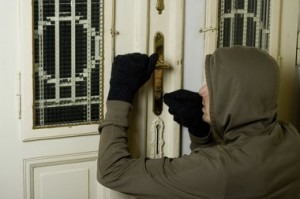High-risk neighborhoods have residential areas that are prone to break-ins and theft. Renters and homeowners must often worry about valuables, mementos, and technology being stolen from their properties. Before moving, do research about a community, and find out what the crime trends are. If living in a bad neighborhood is unavoidable, take a look at these five ways to keep an apartment safe from break-ins.
1. Get to know the neighbors
Neighbors can make great resources in combating theft. After moving to a new location, make sure to say hello to the neighbors and get their names. People who have a good rapport with their neighbors are more likely to look out for each other’s property and react when something suspicious is happening.
2. Make sure doors and locks are secure
Sit down with roommates, family members, and loved ones who share an apartment. Talk about locking doors when no one is at home. Examine the doorframe for any cracks or holes that someone may use to work open a door. If a lock is broken, call a landlord and have it fixed. Use chains and deadbolts to provide additional security.
3. Don’t leave windows open
There are many opportunities for theft when residents leave their windows open. A robber may be able to reach inside of a room and swipe a laptop from a table. Windows also allow criminals to see inside the apartment and learn if anyone is at home. Avoid leaving windows open unattended. When leaving the house at night, one may leave a light on so that an apartment seems occupied.
4. Get insurance
When apartments are broken into, robbers often take valuables and break personal items. This can leave an individual or family with the costs of replacing and fixing these items. Protect an apartment and belongings by signing up for a renter’s insurance policy. Insurance companies typically charge an annual fee, but residents can save much more if their belongings are damaged or stolen during a break-in. Do some quick math and add up the total value of one’s belongings at home. Then research to find a policy that best fits one’s needs.
5. Install motion-sensor lights
Motion sensor technology will activate whenever someone walks near an entrance, window, or other area that a resident wants to secure. This can indicate when an unwelcome visitor is on the premises and allow renters to call the authorities. Lights can allow one to get a better look at a potential robber and may scare away intruders.
